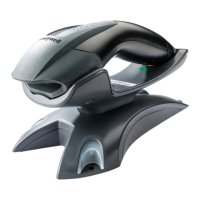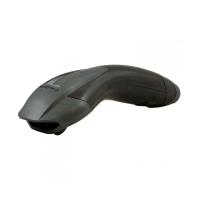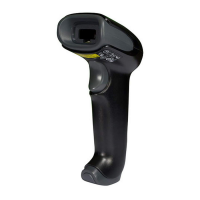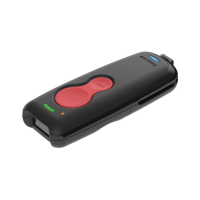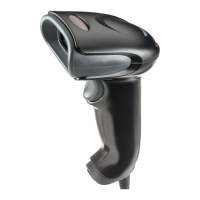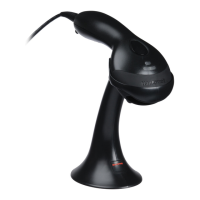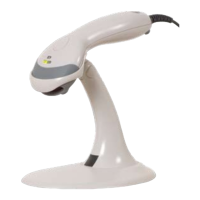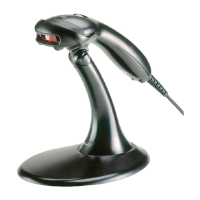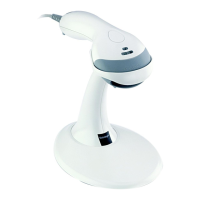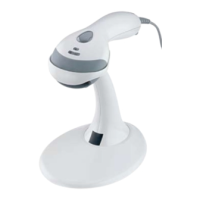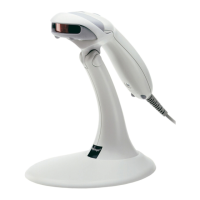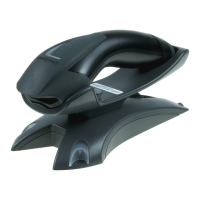
Do you have a question about the Honeywell Voyager 1202G and is the answer not in the manual?
| Type | Handheld bar code reader |
|---|---|
| Sensor type | Laser |
| Scanner type | 1D |
| Pitch reading angle | 60 - 60 ° |
| Linear (1D) barcodes supported | - |
| Wireless range | 10 m |
| Bluetooth version | 2.1+EDR |
| Operating frequency | 2.4 - 2.5 MHz |
| Standard interfaces | Bluetooth |
| Connectivity technology | Wireless |
| Battery life | 12 h |
| Charging time | 4 h |
| Input voltage | 5 V |
| Battery capacity | 1800 mAh |
| Power source type | Battery |
| Number of reads per charge | 45000 |
| Product color | Black |
| International Protection (IP) code | IP42 |
| Storage temperature (T-T) | -5 - 35 °C |
| Operating temperature (T-T) | 5 - 40 °C |
| Operating relative humidity (H-H) | 0 - 95 % |
| Sustainability certificates | RoHS |
| Harmonized System (HS) code | 84716070 |
| Depth | 180 mm |
|---|---|
| Width | 66 mm |
| Height | 92 mm |
| Weight | 180 g |
| Base weight | 185 g |
| Base dimensions | 200 x 67 x 97 mm |
Overview of the user guide's content and purpose.
Instructions for unpacking the scanner and verifying contents.
Guides for connecting the scanner via USB, Keyboard Wedge, RS232, and RS485 interfaces.
Explains how to use the aiming beam and proper scanning distance for optimal reads.
Information on restricting access to menu bar codes for scanner programming.
Procedures for setting custom defaults and resetting to factory defaults.
Overview of programming the scanner for desired system interfaces.
Using Plug and Play bar codes for quick setup of common interfaces like Keyboard Wedge and RS232.
Details on configuring RS232 and RS485 serial port connections for terminals.
Settings for USB SurePos, PC/Mac Keyboard, HID, Fallback, Serial Emulation, CTS/RTS.
Programming for OPOS, IBM SurePos, and specific terminal types like Verifone, Gilbarco, NCR, Wincor.
Settings for country layout, wedge modifiers, style, conversion, inter-scan delay, and break characters.
Explains the function of the charge and communications base for cordless scanners.
Procedures for establishing and managing scanner-to-base links, including locked and open modes.
Details on battery handling, charging, replacement, and safety precautions for lithium-ion batteries.
Interpretation of scanner and base LED/beeper signals for status and communication.
Settings for storing and transmitting bar code data when out of range or for inventory.
Managing Bluetooth connections, PIN codes, auto-reconnect, and link attempts.
Customizes beeper behavior for power-up, BEL characters, good reads, and errors.
Configures LED status indicators, brightness, and behavior for specific modes like CodeGate.
Settings for scanner behavior when in-stand or out-of-stand, including activation, detection, and timeouts.
Settings for CodeGate activation and object detection modes with laser timeouts.
Manages character-triggered scanning and deactivation of the scanner.
Adjusts reread delays and configures output sequence rules for scanned data.
Configures how the scanner indicates unreadable bar codes.
Adds, clears, or modifies prefixes and suffixes for bar code data transmitted to the host.
Settings for transmitting special keyboard functions and function codes within scanned data.
Specifies transmission types for check characters (LRC, CRC) to enhance data integrity.
Configures intercharacter, interfunction, and intermessage delays to manage data throughput.
Explains how to use the editor to insert characters and modify bar code data output.
Procedures for creating, saving, and clearing primary/alternate data formats.
Details commands for sending data, searching strings, and manipulating data within formats.
Configures how data formats are applied, including required/optional settings and error handling for non-matching data.
Allows selection and temporary switching between saved data formats for scanning.
Enables temporary switching to an alternate format for a single scan.
General settings for enabling or disabling all symbologies or specific types.
Explains how to set minimum and maximum lengths for bar code reading to improve accuracy.
Detailed configurations for various bar code symbologies like Codabar, Code 39, Interleaved 2 of 5, NEC 2 of 5, GS1 DataBar, etc.
Maps keyboard function codes, HEX/ASCII values, and CTRL+ key combinations for terminal compatibility.
Lists supported keys and their mappings for IBM AT/XT/PS2 and Apple Mac/iMac systems.
Utilizes test menu for programming display and PC-based scanner configuration via EZConfig-Scanning.
Explains conventions, syntax, and terminology used for serial programming commands.
Details on how to query device settings and interpret the responses received from the scanner.
Commands to control scanner activation/deactivation via serial and set button time-outs.
Procedures to restore scanner settings to their original factory default configurations.
Mechanical, electrical, environmental, and performance specifications for the Voyager 1200g scanner.
Mechanical, battery, radio, environmental, and scan performance specifications for the Voyager 1202g scanner.
Technical specifications for the CCB00-010BT charge and communications base.
Pinout details for various interface cables including Keyboard Wedge, Serial, RS485, and USB.
Guidelines for cleaning the scanner and replacing interface cables for corded and cordless systems.
Steps to diagnose and resolve issues with scanner power, laser, symbol reading, and display.
Guidance for troubleshooting issues with the cordless base and scanner connectivity.
Contact methods for support, including knowledge base, portal, web form, and telephone.
Details on obtaining warranty and non-warranty service through global service centers.
Outlines warranty terms, coverage, exclusions, and duration for Honeywell products.
A table listing supported symbologies with AIM ID, modifiers, and Code ID (hex).
Maps decimal, HEX, and character codes for non-printable, printable, and extended ASCII characters.
